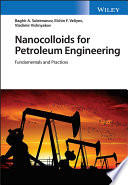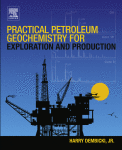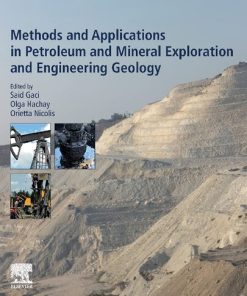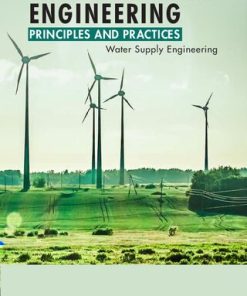Nanocolloids for Petroleum Engineering: Fundamentals and Practices 1st edition Baghir Suleimanov
$50.00 Original price was: $50.00.$25.00Current price is: $25.00.
Nanocolloids for Petroleum Engineering: Fundamentals and Practices – Ebook Instant Download/Delivery ISBN(s): 9781119889595,1119889596

Product details:
- ISBN-10 : 1119889596
- ISBN-13 : 978-1119889595
- Author: Baghir A. Suleimanov
Nanocolloids for Petroleum Engineering brings together the background, latest advances, and practical and theoretical information about nanocolloids for petroleum engineering in one comprehensive volume. The text is structured in such a way to allow readers to easily distinguish key points and quickly gain the expertise they need to become more effective in their respective disciplines. For practical purposes and to aid in seamless reader comprehension, experiences of service companies, general guidance, and problem solving exercises are included throughout the text.
The highly qualified authors specifically present the subject as petroleum experts and use a niche industry point of view, which means petroleum, reservoir, and drilling engineers will be able to quickly understand and digest the information contained within.
Table contents:
Chapter 1. Nanocolloids classification
1.1. What is colloid?
1.2. Colloids classification
1.3. Colloids evaluation
1.4. What is nanocolloid?
Chapter 2. Nanocolloids properties
2.1. Different kind of interactions in nanocolloids
Van der Waals interactions
Electrostatic interaction
Elastic-steric interaction
Hydrophobic interaction
Solvation interaction
Depletion interaction
Magnetic dipole-dipole interaction
Osmotic repulsion
2.2. The stability of nanocolloids
2.3. Rheology of nanocolloids
Effect of nanoparticles interaction on the colloids rheology
Effect of nanoparticles migration on the colloids rheology
2.4. Surface Tension.Wettability
Wettability alteration
Surface tension
Chapter 3. Reservoir conditions for nanocolloids formation
3.1. In-situ formation of nano-gas emulsions
Stability of the subcritical gas nuclei
3.2. In-situ formation of nanoaerosoles
Stability of the subcritical liquid nuclei
Chapter 4. Nano-gas emulsions in oil field development
4.1. Hydrodynamics of nano-gas emulsions
Flow mechanism of gasified Newtonian liquids
Annular capillary flow scheme
Slip effect
Concluding remarks
Flow of gasified Newtonian liquids in porous media at reservoir conditions
Fundamental equations
Apparent permeability
Steady-state flow
4.2. Hydrodynamics of nano-gas emulsions in heavy oil reservoirs
Flow mechanism of gasified non-Newtonian liquids
Annular capillary flow scheme
Slip effect
Flow of gasified non-Newtonian liquids in porous media at reservoir conditions
Capillary flow
Flow in a homogeneous porous medium
Flow in a heterogeneous porous medium
Concluding remarks
4.3. Filed validation of slippage phenomena
4.3.1. Steady state radial flow
Gasified Newtonian fluid flow
Gasified non-Newtonian fluid flow
4.3.2. Unsteady state flow
4.3.3. Viscosity anomaly near to phase transition point
Experimental procedures
Measurement of live oil viscosity
Phase behavior of live oil and viscosity anomaly
Surfactant impact on phase behavior of live oil and viscosity anomaly
Mechanism of viscosity anomaly
Mechanism of surfactant influence on phase behavior of live oil and viscosity anomaly
Concluding remarks
Chapter 5. Nanoaerosoles in gas condensate field development
5.1. Study of the gas condensate flow in porous medium
5.2. Mechanism of the gas condensate mixture flow
Rheology mechanism of the gas condensate mixture during steady-state flow
a) Annular flow scheme in a porous medium capillary
b) Slippage effect
Mechanism of porous medium wettability influence on the steady-state flow of the gas condensate
Mechanism of pressure build-up at the unsteady-state flow of the gas condensate
Concluding remarks
Chapter 6. An overview of nanocolloids application in production operations
Chapter 7. Nanosol for well completion
The influence of the specific surface area and distribution of particles on the cement stone strength
The influence of nano-SiO2 and nano-TIO2 on the cement stone strength
Regression equation
Concluding remarks
Chapter 8. Nano-gas emulsion for sand control
Fluidization by gasified fluids
Carbon dioxide gasified water as fluidizing agent
Natural gas or air gasified water as fluidizing agent
Chemical additives impact on fluidization process
Water-air mixtures with surfactant additives as fluidizing agent
Fluidization by polymer compositions
Mechanism of observed phenomena
Chapter 9. Vibrowave stimulation impact on nano-gas emulsion flow
Exact solution
Approximate solution
Concluding remarks
Chapter 10. An overview of nanocolloids applications for EOR
Core flooding experiments focused on dispersion phase properties
Core flooding experiments focused on dispersion medium properties
People also search:
nanotechnology in oil and gas industry
anode grade petroleum coke
petroleum engineering for non-engineers
nanotechnology for chemical engineers
nanotechnology in petroleum industry
petroleum engineering ku
You may also like…
Engineering
Engineering - Hydraulic Engineering
Engineering - Engineering - General & Miscellaneous
Engineering Fundamentals: An Introduction to Engineering, 6th Edition Moaveni Saeed
Housekeeping & Leisure - Interior Design & Decoration
Engineering - Energy & Power Resources
Methods and Applications in Petroleum and Mineral Exploration and Engineering Geology Said Gaci
Engineering - Hydraulic Engineering












